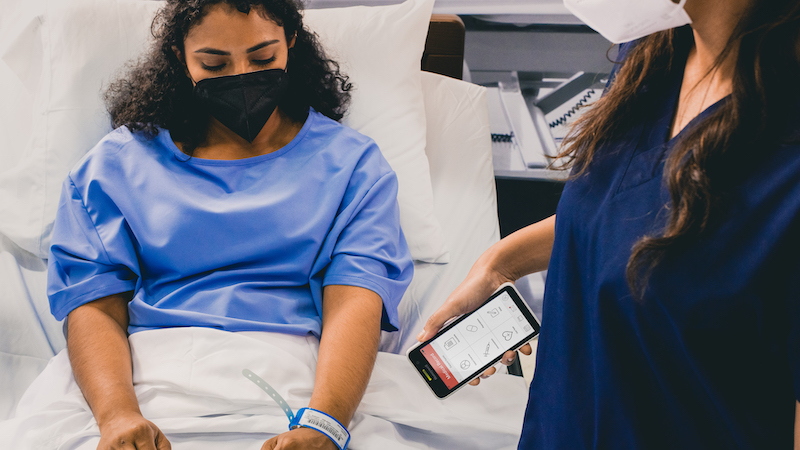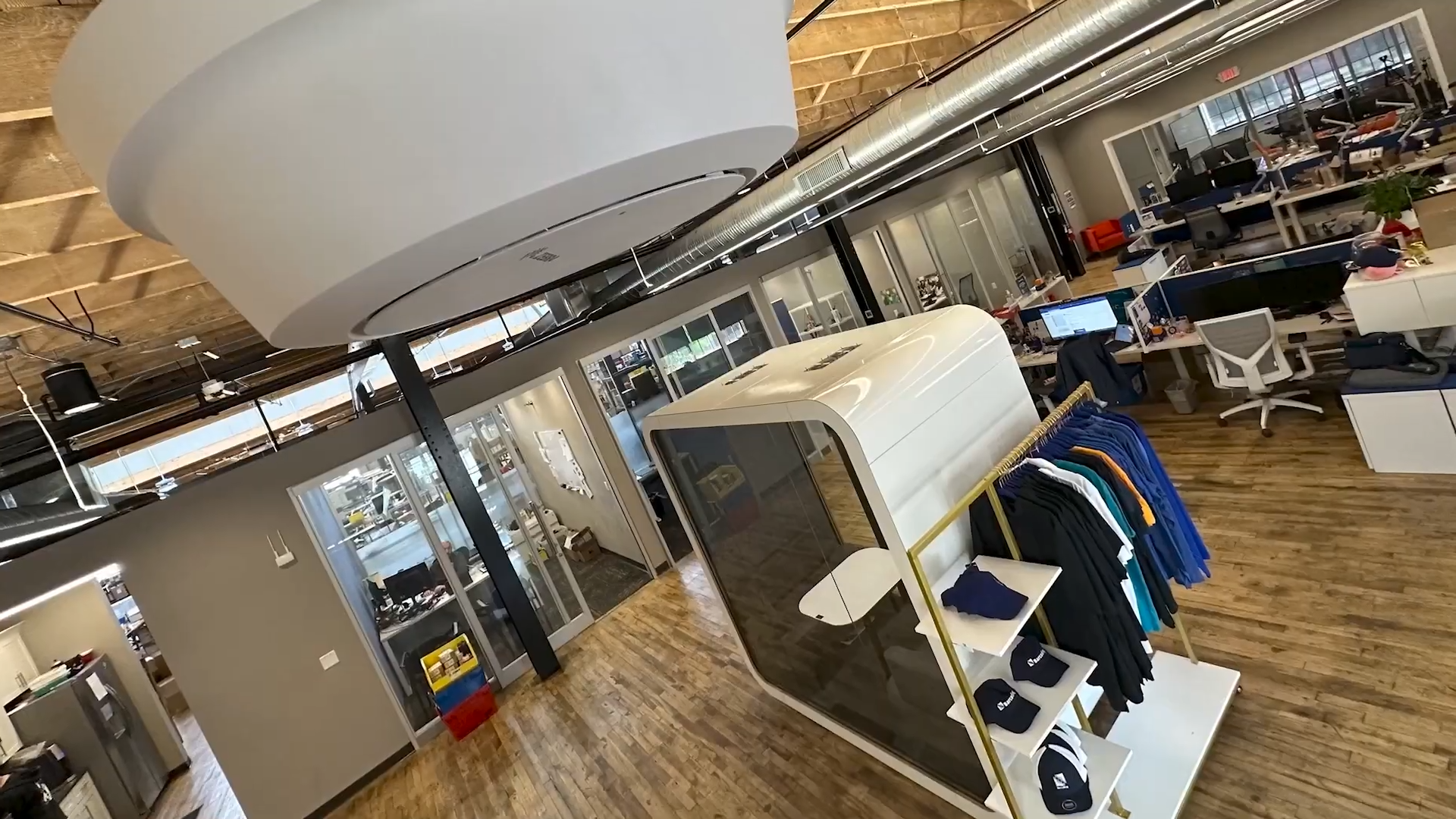Who’s responsible for patient belongings and valuables?
Joint Commission International Patient and Family Rights (PFR) Standard 1.4 (PFR.1.4) requires that hospitals:
- Protect patients’ possessions from theft or loss
- Communicate the organization’s policies of patient belongings and valuables
- Document processes for taking responsibility of patient possessions and preventing theft or loss
- Consider the needs of emergency departments, outpatient surgeries, inpatients, those who don’t have alternatives for safekeeping with loved ones, and those who aren’t capable of making decisions
A streamlined collection process improves accountability and visibility into patient belongings, no matter how or where patients first enter a facility, how long they stay, or how many departments they interact with.
To simplify and speed the process, staff members need a simple way to differentiate property types, catalog items, document details, and update records at any time during a stay.
And when healthcare providers have one source of real-time data about all patient property in their care, they can begin to really understand what’s at stake. This can help with refining policies and processes to further manage risk, and potentially reduce reimbursement payouts due to lost patient belongings.
Document and Clarify Patient Property Policies
Most healthcare organizations have policies clearly stating that patient possessions are the responsibility of patients and their visitors. They often urge patients to leave items of value at home or in the care of visitors rather than entrust them to the hospital system. Even so, patient items can be misplaced or lost. Among the most commonly misplaced items are:
- Eyeglasses
- Hearing aids
- Cellphones
- Assistive devices
- Dentures
These are expensive objects to replace—and some of the hardest to live without. Yet it’s routine for patients to sign waivers releasing providers from legal liability for their property.
It’s unrealistic to expect a patient to have a good hospital experience and subsequent recovery without their optimal sight, hearing, or ability to properly chew. So organizations often take a case-by-case approach to lost items and pay out reimbursements despite clear policies—and they’re left asking how they can further reduce losses.
When patients and their families understand the limits of hospital safekeeping, they may be more likely to keep an eye out for dentures left on food trays, hearing aids or glasses left in linens, and other objects left behind.
Structured and streamlined processes make it faster and easier to comprehensively document all of a patient’s property, reducing the likelihood of small items going missing.
Addressing Complex Collection & Documentation Processes
The more manual a process is, the less standardization can be applied, and the greater the opportunity for human error. Patient property collection often uses pen and paper forms or requires staff to manually key in items in an electronic patient record. Typically, the process looks like this:
- Collect items from the patient
- List by hand on paper-based form (or type into an electronic system)
- Patient and staff both sign a form
- Staff places items in a patient property bag, attach the form, and seal
- Staff places the belongings bag in secure storage as appropriate: Valuables go to a higher-security storage site and belongings are often stored in a locker in the patient’s room or in another locked area
Manual processes rely heavily on staff members’ recall about specifics of a patient’s belongings. Ambiguous definitions for belongings versus valuables also introduce risk to the process. It can be even more complicated to expedite a manual inventory when there are concerns over violence or contraband items.
Problematic collection and documentation become even bigger risks when departments deny ownership and accountability, or when communication breaks down as a patient is moved or transferred without an explicit transfer of responsibility. Manual collection processes leave no audit trail to identify when or where an item went missing.
Vague policies can also lead to outright mistakes in cataloging and detailing property. If a policy states, “Inventory must be detailed,” what does that mean to staff collecting a wallet? How much cash is considered valuable? Do all credit cards need to be individually recorded? What if a pair of earrings is found inside a handbag?
The process of detailing contents can be time-consuming and tedious—especially for healthcare staff who are already under significant strain on the job. Most policies require a patient’s items to be recorded and stored securely “as soon as possible” after admission. But what happens when admission is within an hour of shift’s end? A tough task at the end of a demanding shift can be a recipe for trouble.
How to Streamline the Patient Belongings Process
Automating patient belongings processing can help eliminate ambiguity and offer a new level of visibility for every staff member involved in patient belongings management—up to and including risk management staff. With a mobile-first application like IntelliTrack® Patient Belongings Tracking, it’s fast and easy for any staff member with app access to:
- Associate patient belongings with a patient wristband barcode
- Clearly define property types and categories without having to make decisions or use individual judgment
- Quickly complete detailed records that include photographic proof of property and its condition
- Establish and protect chain of custody
- Collect and store signatures of patient or next of kin
- Locate, retrieve, and return items on request or at discharge without wasting time searching for records (or the property itself)
In just a few clicks, staff can list, categorize, and photograph all of a patient’s belongings before sealing items in a secure patient property bag and documenting the storage site.
IntelliTrack Patient Belongings Tracking (PBT) was developed to be flexible and enough to fit into established processes and support hospital patient belongings policy—not the other way around. New users don’t have to overhaul collection processes or policies; PBT is there to make existing processes work better. And the web-based dashboard offers administrative staff crystal-clear, real-time data on the property in a facility’s care at any given time.
Improving Focus on Patient Care
Properly documenting patient property demonstrates care and improves patient experience, but tedious processes can impede the quality care nursing staff strive to provide. Automated patient belongings processing can help healthcare organizations strike the delicate balance needed to meet expectations and improve patient satisfaction.
Structured, standardized processes and record-keeping can help improve overall risk management and reduce reimbursements. And making work simpler for nurses can go a long way toward preventing staff burnout and demonstrating care for employees. Learn more about the ways to measure ROI on a barcode-based patient belongings system. Download our free whitepaper by clicking here or below.







